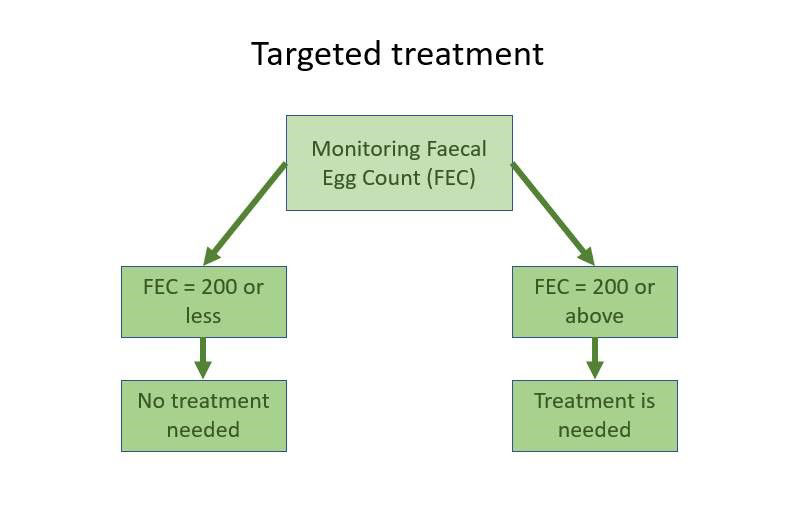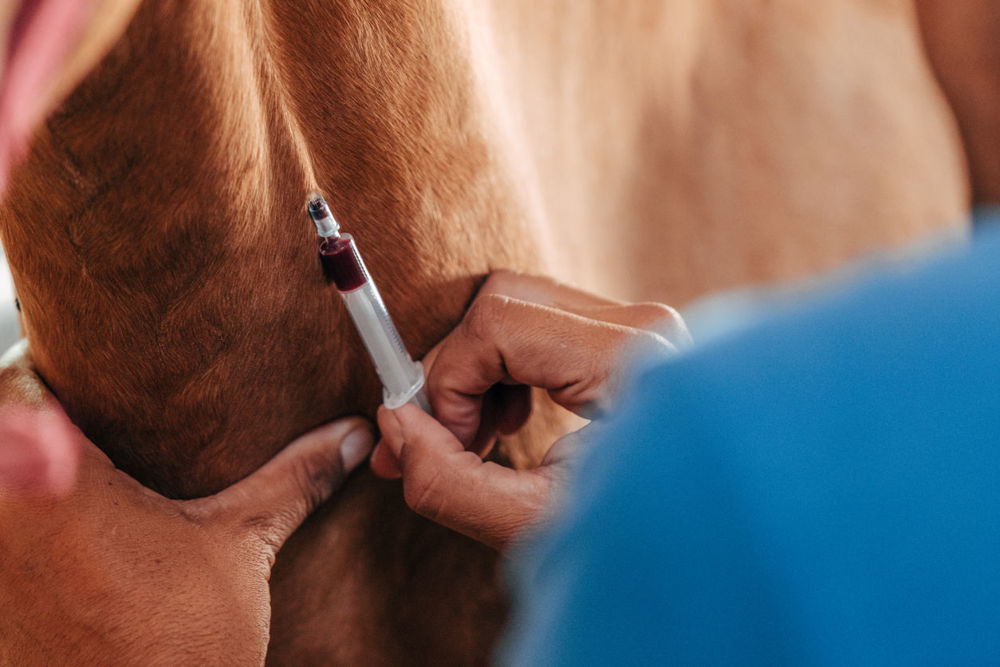Anouk Frieling, Senior Nutritionist
Horses turned out on grass are likely to have issues with parasites throughout their life. Serious health issues caused by parasite infections are better prevented than cured, which makes it important to test and treat horses, which are identified as high egg shedders, during the winter period for parasite infections. This reduces outbreaks of parasites during spring when they become more active again and will control the parasite population by preventing them from increasing in number.
All horses have parasites to some degree, the important factor is the level of infection as parasite infections can affect the health and welfare of the horse. Infections can cause health issues such as weightloss, colic or diarrhoea. Therefore for horse owners parasite control is an important part of managing the health and welfare of their horse(s). The most common parasites in adult horses are small strongyles (cyathostomins), large strongyles (strongylus vulgaris) and tapeworms (Anoplocephala perfoliate).

Figure 1: It is most likely that grazing horses will be infected with parasites throughout their life, therefore management and control of parasites is important.
Treatment strategy for parasites in horses
Through recent years control strategies and treating parasite infections have been revised and have changed. Previously parasite infections were controlled through frequent use of anthelmintic treatments. This has led to certain parasite species developing resistance against these anthelmintic treatments.
It is suggested that instead of frequently administering anthelmintic treatments, parasites are controlled with use of targeted treatment. Targeted treatment can be achieved by monitoring the faecal egg count (FEC) and only selecting horses for treatment with a high number of eggs as these horses are classed as high shedders, meaning that they excrete a high number of parasite eggs which in turn supports continued parasite infections and poses a risk to other horses. A high egg count is considered when there are between 200 and 500 eggs per gram (epg) of faeces.
It is then suggested to treat the horse with the proper deworming treatment. Horses with egg counts lower than 200 EPG will not be treated. Analysis has shown that the use of targeted treatment reduces the use of dewormers by about 82%, which also reduces the costs of parasite treatment on a yearly basis. Faecal egg counts have also been used to detect the resistance of certain parasite species against anthelmintic treatments. The eggs in the faeces of a horse are counted, enabling the risk to other horses to be assessed by determining if the horse has a low, medium or high egg count. The egg count does not determine the horses own parasite burden as there is no correlation between the amount of eggs in the faeces and the number of parasites within the host horse, however FEC do enable horses that shed lots of eggs to be identified and treated with the appropriate anthelmintic treatment. This reduces the risk to other horses and helps to control the parasite levels in the population of horses.
After horses have been treated with anthelmintics further FEC should be performed so the number of eggs can be assessed and the impact of the anthelmintic to be determined (Raza et al., 2019). Determining the anthelmintic resistance this way is one of the most reliable and suitable tests that can be used for resistance in horses. Another strategy accompanying the targeting treatment to reduce parasite infections is managing the pasture. This is accomplished by for instance removing faeces from the pastures at least every 3 days (preferably every day), rotating the horses on different parts of the pasture or letting the horses graze with other ruminants.

Figure 2: With use of a targeted treatment plan, use of anthelmintic treatments will decrease. This prevents the resistance of certain parasite species to these treatments.
Parasite testing kits for Redworm in horses
Testing kits have been developed to identify the specific parasite and the burden of the infection of the parasite in the horse. Two separate tests have been developed, one that is able to identify small red worms with use of blood samples and the other one is able to detect and estimate the burden of tapeworm in a horse using saliva samples.
The small strongyles (cyathostomins), also known as small red worms, are the most common parasites in horses. Red worm infections do not always cause health issues but serious infections by these parasites can cause cyathostominosis which is colic caused by the red worm larvae emerging in large numbers from their cysts within the large intestine wall. These parasites can also cause rapid weight loss or diarrhoea. In the worst case these health issues can be fatal to the horse.
Due to overuse of anthelmintics to treat infections of red worms, they have become resistant to these treatments, therefore it is of importance to use targeted treatment to properly treat small redworm infections in horse. Small red worms have shown resistance against the anthelmintics benzimidazoles and tetrahydropyrimidines. Recently the use of Ivermectin and moxidectin for small red worm infections seemed to be less effective due to reappearance of small red worm eggs shortly after administration of the anthelmintic and is reported as an early sign of anthelmintic resistance. Even though there are signs of reduced efficiency of moxidectin and ivermectin treatments, these anthelmintics are currently the most effective treatments against small red worms. A commercial blood test has been developed to detect antibodies which are related to an red worm infection. This test is able to detect the small redworm during all stages of the lifecycle. It is advised to consider testing after monitoring the FEC of the horse to identify horses with a high egg count (200 or more eggs per gram of faecal sample) which indicates active red worms in the horse. The distributer of this test recommends to perform the test during autumn or early winter due to the fact that guidelines advise to treat for encysted red worms at this time of year. After testing, the results of these tests and the probabilities of the infection burden in the horse will be shared with the veterinarian. In consultation with the veterinarian a treatment plan can be made for the specific infection in the horse.
Parasite testing kits for Tapeworm in horses
Another parasite which is very common in grazing horses is tapeworm. The tapeworm Anoplocephala perfoliate is an especially common tapeworm species in horses in the UK. This tapeworm is also associated with clinical signs such as colic and rapid weight loss.
Through FEC it sometimes is not possible to estimate the actual tapeworm burden in the horse, therefore using a testing kit can determine the burden of the infection of the tapeworm in the horse. The testing kit is able to identify tapeworm through antibodies in the saliva of the horse. If the saliva score indicates a moderate or hugh burden of tapeworms, it is suggested that the horse is treated with the appropriate anthelmitic.
Tapeworm infections are treated with the anthelmintics pyrantel pamoate and praziquantel. Currently anthelmintic resistance of tapeworms has not been documented yet, and using this test can help to prevent the over usage of treatment against tapeworms and therefore prevent the resistance of tapeworm against anthelmint treatment.

Figure 3: Blood and saliva tests are developed to identify the parasite infection, enabling the right treatment plan to be followed.
Summary
In summary, it is important to control and manage parasite infections in the horse to manage their health and welfare. It is advised to avoid frequent use of anthelmintic treatments to prevent or worsen anthelmintic resistance of parasites. Targeted treatment is used to control parasite infections and treat horses that support the parasites life cycle by using FEC monitoring and diagnostic tests to identify high risk horses.


